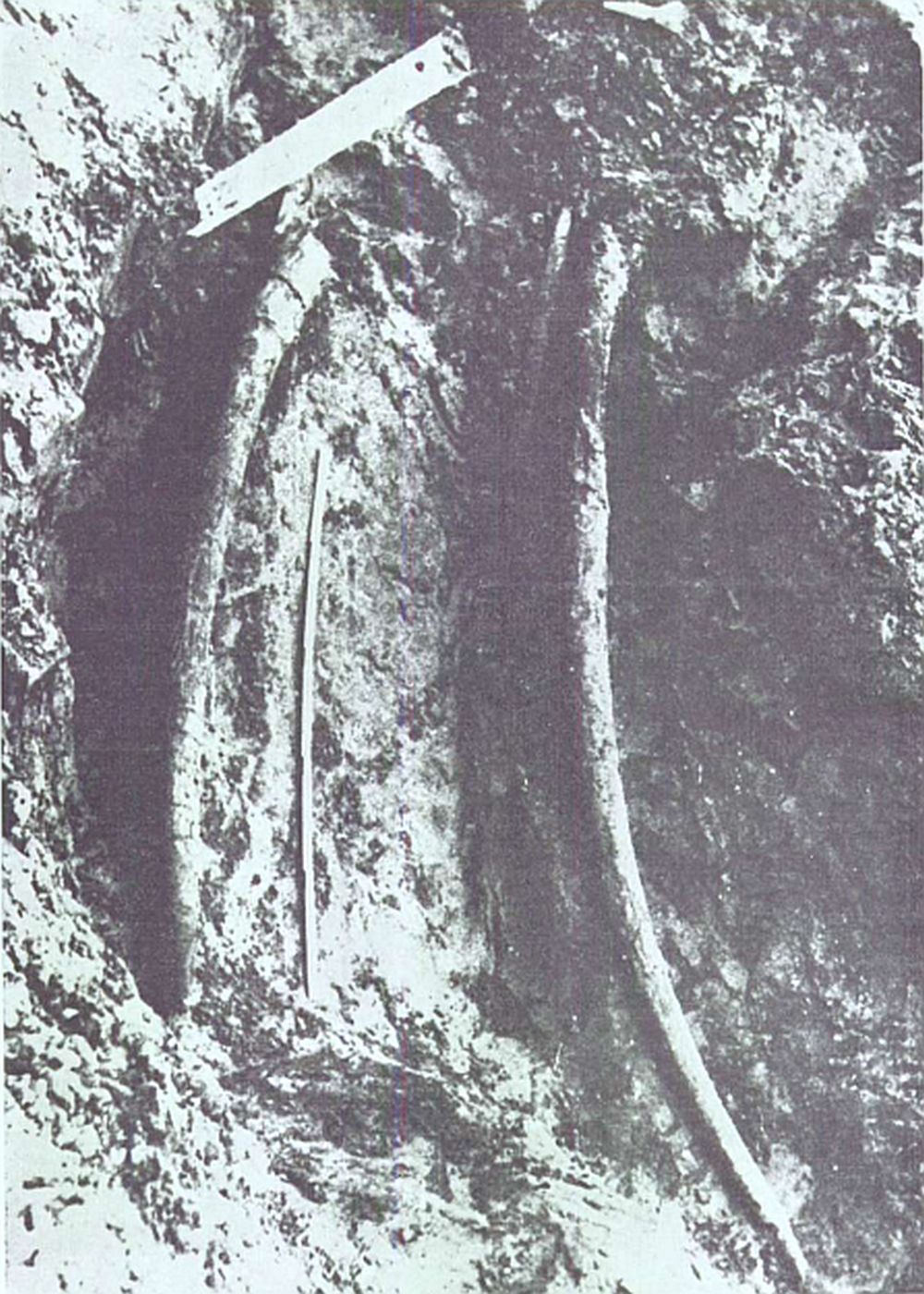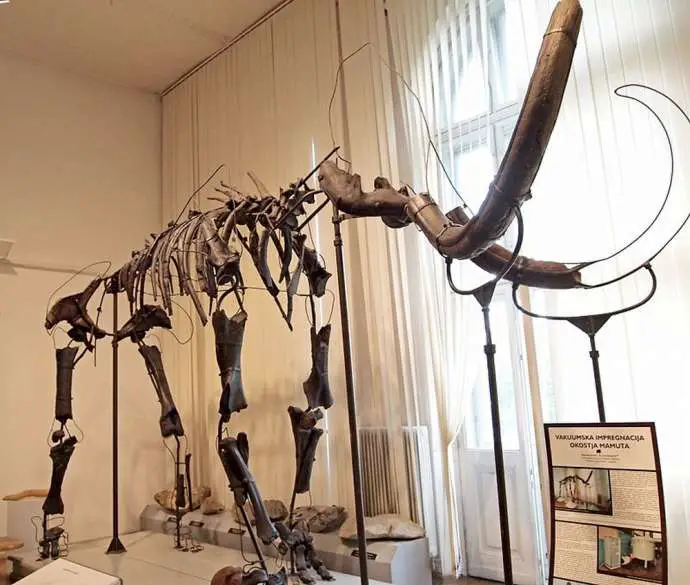May 13, 2019
In March 1938 a small stream called Nevljica was being regulated and a bridge was planned to be built across it at Nevlje, near Kamnik. Mayor Nande Novak supervised the works at the construction site, when one day the workers complained that they’d hit an obstacle – tree stumps, they said.
The mayor looked at the “stumps” and recognized them as bones but had no idea what kind of creature they once belonged to. He stopped the works and sought advice from Josip Sadnikar in Kamnik.
Josip NIkolaj Sadnikar (1863-1953), a veterinarian by profession, was an enthusiastic collector of antiquities since his years in high school. In the “stumps” that were brought to him he recognized an extinct mammal, a mammoth, which had died about 20,000 years ago.
Sadnikar informed the museum workers about the finding, who immediately began with excavations. The digging lasted for about two weeks in an area of about 180 square meters, and resulted in the finding of nearly an entire skeleton of an exceptionally large male mammoth, a tusk measuring 2.7 meters in length.
The mammoth, 40 years old when it died, was most probably killed by Stone Age hunters, who also left behind some of the tools and probably broke into the skull of the animal to get at the soft tissue inside in search for food, which is why the skeleton is missing some skull bone.
Although findings of tusks and parts of mammoth bones are relatively common, whole skeletons are not. The mammoth’s bones are now exhibited in the Slovenian Museum of Natural History.
Mammoths, however, were not the oldest elephant-like creatures whose presence has been confirmed by excavations. Since the late 19 century, several findings have proven that several much older species stomped these lands, known under a common name of mastodon.
In 1871 a whole mastodon skeleton was found near Ljutomer, but it fell apart during excavation. In 1888 parts of a head and skeleton of the species called Tapirus hungaricus H. v Mayer were found in Šaleška dolina.
In 1890 a fragment of a tooth was found in Velenje, and other small fragments were also found near Radgona, and near Slovenska Bistrica in 1942. After the war, fragments of mastodon were also found near Slovenske Gorice and Čentibske Gorice, and finally, in 1964 in Škale near Velenje, where four mastodon sites were discovered.
The most interesting one consists of a skull with teeth and two tusks. The left tusk is 2.3 meters long and is completely preserved, including its root still stuck in the bone of the head.

From the findings they have identified three specimens of two different species of mastodon, who lived approximately 1.7 million years ago.
Mastodon’s lived much earlier than mammoths, they had a longer, stocky body and head and forward pointed tusks.
Mastodon remains are exhibited at Velenje Museum.
Source: Kladnik Darinka: Slovenija v zgodbah, Cankarjeva založba, Ljubljana, 2015






